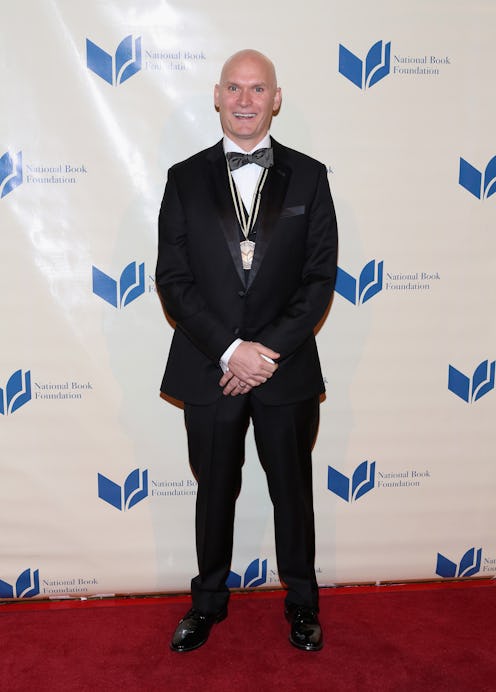Books
Is 'All the Light We Cannot See' A True Story?
Anthony Doerr swept all us readers up into another world with his dazzling National Book Award for Fiction nominee All the Light We Cannot See. I'm sure we've all read our fair share of novels set in World War II, but Doerr tells such a unique story, and his characters feel well-rounded and alive. Of course we know that the war really happened (I certainly hope we do), but what else in the novel is true? Is All the Light We Cannot See based on a true story?
All the Light We Cannot See is set during the German occupation of France, following a blind French girl named Marie-Laure who lives with her father in Paris. Marie-Laure's father builds a miniaturization of their neighborhood so that she can "see" her way around without her sight, and purely from memorization of her dad's work. But when the Germans occupy Paris, Marie-Laure and her father escape to the home of her great uncle in Saint-Malo on the coast, a rare, valuable jewel from the Museum of Natural History with them.
Set alongside Marie-Laure's story is that of German orphan Werner who is obsessed with building and fixing radios. It's this love that earns him a spot in Hitler's Youth, traveling around France looking for anti-Nazi sentiment. Of course, this is when his story links with Marie-Laure's.
While Doerr has said that Marie-Laure and Werner are not based in fact, Saint-Malo is a very real place. He visited Saint-Malo a handful of times during the course of writing, which is what made the town feel so vibrant on the page. As Doerr told UT San Diego:
The idea to set the story there — this was about a year after that episode on the train we talked about earlier — came while I was on a book tour and I went to Saint-Malo. My book editor was telling me a lot about the history of the place. At first glance you can’t really tell, if you’re a foolish American like me, that all these buildings were destroyed in 1944. That really opened up my mind.
Then I got to tour these old pirates’ houses and see these reinforced cellars. As soon as I saw those basements, where they used to store their loot, I thought that’s where I can have the boy in my story be trapped. I ended up going back two other times to make sure I was getting details right, getting the air and the weather and the birds, the way the homes look in certain lights.
His other major writing inspiration came from one of those common, everyday occurrences I'm sure we've all had.
I was in Princeton, riding the train up to meet my publisher, searching around for a new idea. I had my notebook open in my lap and this guy got angry, embarrassingly so for him, about his phone.
I thought he was taking this magic for granted. We all are. I’m talking to you right now, you’re a thousand miles south, we’re using little shapes of light to send our words back and forth at the speed of light, cascading between relay towers. That day I wrote the title down in my junky little notebook, “All the Light We Cannot See.”
It was the fact that radio, this magic he was talking about on the train, was so vital to the World War II era and the Nazi cause that inspired him to create his story as historical fiction. The elements of the story, such as the historical facts and the setting, are all very real. But the two young characters caught up on different sides of the war are straight from Doerr's impressive imagination.
